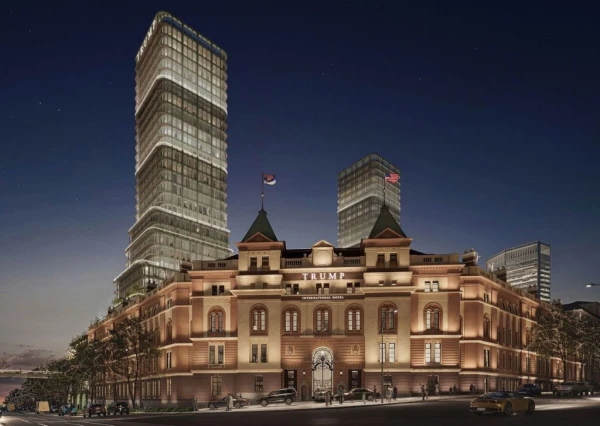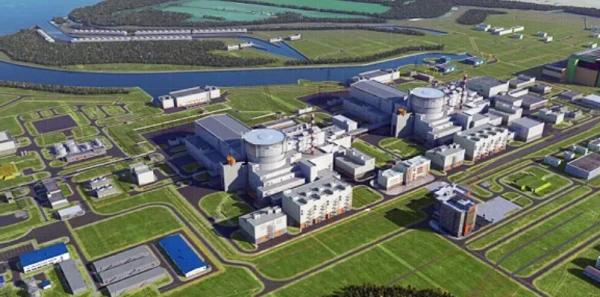
The production of one nuclear test in the USSR cost up to 70,000,000 dollars.
The Russian military-political leadership is considering the feasibility of starting preparations for the resumption of nuclear tests. However, the technical capability for such tests is provided by a nuclear test site built during the Soviet era and still operational on New Earth. How is it structured and what needs to be done to resume testing today?
New Earth is an archipelago in the Arctic Ocean between the Barents and Kara Seas, consisting of two large islands - the Northern and Southern. It has an extremely harsh Arctic climate. Winter temperatures can drop below -40 degrees Celsius, while the average temperatures of the warmest month, August, range from 2.5 (on the Northern Island) to 6.5 degrees (on the Southern Island). The polar night and fierce winds have sometimes led to tragedies. There have been instances where people lost their bearings and froze to death even in the center of the test site - in Belushya Bay, attacks by polar bears were a frequent occurrence.
Formally, the test site was divided into three technological areas where tests were conducted: Zone A (the Black Bay area, underwater and above-water explosions), Zone B (in the area of the Matotchkin Strait, underground explosions were conducted in tunnels); Zone C (the Dry Nose Peninsula): ground and aerial nuclear explosion tests. Here, in particular, the "Tsar Bomba" - the most powerful 50-megaton thermonuclear charge - was tested.
During the Soviet era, when tests were conducted regularly, the direct preparation for each underground explosion (since 1963, our country conducted only such tests) began in July, with the experiments themselves taking place from August to October, and very rarely in November. Such restrictions are primarily related to navigation: the Matotchkin Strait usually becomes ice-free in mid-June, and only then can the necessary materials for preparation be delivered to the test site. At the same time, there is enough daylight for construction work.
To clarify: an underground nuclear explosion is conducted either in wells (vertical shafts) - when testing new weapon systems, or in a tunnel (horizontal tunnel) - to study the damaging factors of the explosion. According to American data, at the turn of the 90s, the cost of preparing a vertical shaft was 20-30 million dollars, while for a tunnel it was 40-70 million due to the larger volume and increased complexity of the work. At that time, the preparation for one test took at least 18 months.
This provides a clear understanding of the volume of work and the necessary amount of materials, which are mostly brought in from the mainland. Delivering them, for example, by icebreakers would be unjustifiably expensive.
The preparation of test sites was carried out by military construction units, as well as civilian miners who were hired to excavate tunnels. Not far from the village of Belushya Bay was an airfield where a regiment of interceptor fighters was based, protecting the test site, a squadron of transport aviation, and a mixed special purpose squadron, whose pilots carried out all flights within the archipelago. They conducted aerial and ice reconnaissance, communication relay, transportation of people and cargo, search and rescue flights, and air sampling, as well as biological sampling. In other words, they provided aviation support for nuclear tests and the functioning of the test site.
Each test included a whole series of experiments. For example, checking not only the damaging effect of a specific charge but also, say, the radiation protection of armored vehicles, the effect of radiation on plants, and so on. Millions of various sensors were placed in the tunnel, and at the mouth of the leading shaft was an equipment complex that received the collected data.
Great attention was paid to ensuring environmental safety measures during the tests. However, emergencies did occur - the release of radioactive products to the surface. Sometimes, decontamination work on the equipment complex was even required. Such a threat necessitated careful assessment of the meteorological situation, so that in the event of the release of radioactive gases, their spread beyond the test site could be prevented. In other words, not only the conduct of nuclear tests itself but also the preparation for them is a complex and costly undertaking.
The last nuclear explosion at the New Earth test site took place on October 24, 1990, and its conduct was truly dramatic. The nuclear test in the tunnel at the site designated as A-13N was supposed to be conducted in the fall of 1989, according to a government decree. By that time, everything was prepared - the charge itself, sensors, and other necessary equipment were installed. However, the order to conduct the experiment never arrived, as a temporary moratorium on nuclear explosions was declared by the leader of the USSR, Mikhail Gorbachev.
The resulting uncertainty put the workers of the test site, both military personnel and civilian specialists, in a difficult position. It was necessary to guard the ready-to-test object, ensure the deployment of equipment and the command post, despite the onset of polar night and worsening frosts.
In the spring of 1990, a new misfortune arose. New Earth had always been a target of heightened interest from enemy intelligence, but the regime of heightened secrecy, strict counterintelligence measures, and vigilant security left them no chance. However, "new thinking" and the paralysis of political will of the then leadership led to the entry of the ship "Greenpeace" into the area of the Matotchkin Strait. Moreover, "activists" landed on the shore and managed to reach the river mouth site of object A-37A, where tests had been conducted in 1987. There they were detained by regime service employees.
It later became known that among the "greens" were CIA employees who took soil samples from the site on their clothing.
Meanwhile, the approaching winter raised questions not only about the conduct of the prepared test but also about safety issues - the deployed equipment might not survive the winter and could fail. But finally, permission was obtained, and the last nuclear explosion on New Earth took place.
After the collapse of the USSR, the test site began to decline, with some units and services relocated to the mainland, which barely had enough strength to maintain its "viability." Fortunately, in 1995, the test site began to be used for conducting non-nuclear explosions and other dangerous tests. This allowed for the preservation of infrastructure and scientific-laboratory bases. Today, great attention is paid to ensuring the safety of the test site facilities and maintaining the secrecy regime. And there are good reasons for this: enemy satellites operate over New Earth, and spy planes conduct constant flights. But air surveillance posts, anti-aircraft systems, electronic warfare units are constantly on duty on the archipelago, and the adjacent water area is continuously scanned. The test site is guarded by special forces.
The personnel of the Central Test Site is currently involved in conducting and ensuring non-nuclear explosive experiments, as well as continuing work to maintain the laboratory-experimental base and infrastructure of the test site in readiness for full-scale testing activities. However, the resumption of tests after such a long break will undoubtedly require more effort than preparing the next experiment during the Soviet era. Most likely, new equipment will also be needed, more suitable for today's realities. It is not surprising that the Chief of the General Staff of the Russian Federation, Valery Gerasimov, clarified that "preparation for nuclear tests, depending on their type, requires from several months to several years."












